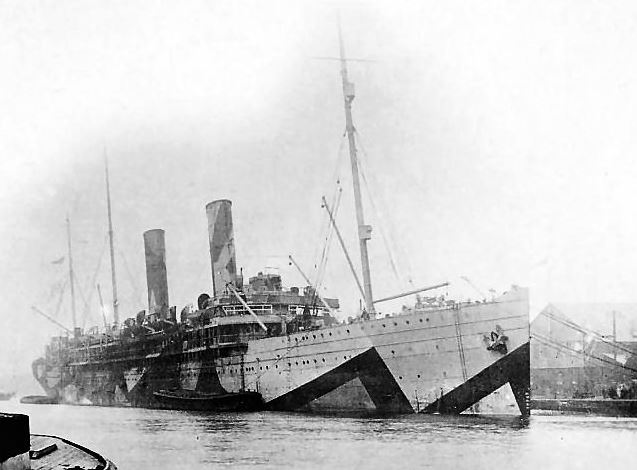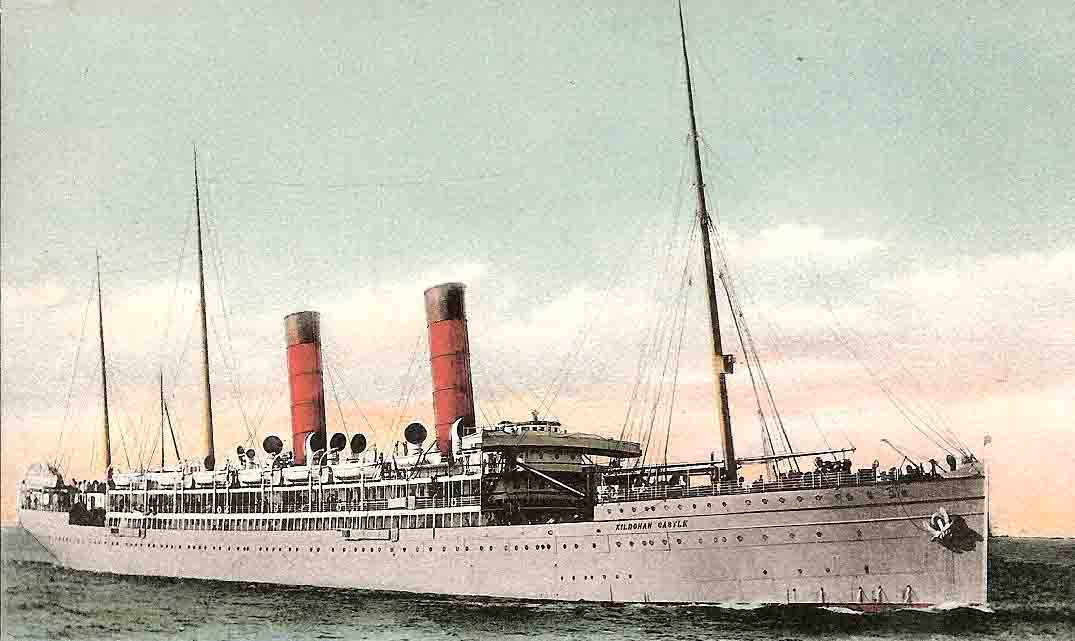Difference between revisions of "SS Kildonan Castle"
From Our Contribution
| (8 intermediate revisions by the same user not shown) | |||
| Line 1: | Line 1: | ||
| − | {{Infobox | + | {{Infobox ship |
| − | | | + | | image = [[File:SS_Kildonan_Castle.jpg]] |
| − | |||
| − | |||
| − | |||
| − | |||
| − | |||
| − | |||
| caption = | | caption = | ||
| − | | | + | | image2 = [[File:SS_Kildonan_Castle_1.jpg]] |
| caption2 = | | caption2 = | ||
| − | + | | shipname = SS_Kildonan Castle | |
| − | + | | shipowner = Castle Mail Packets Co. Ltd. - D. Currie & Co., London | |
| − | + | | shipbuilder = Fairfield Shipbuilding & Engineering Co. Ltd., Govan | |
| − | + | | shipyardnumber = 408 | |
| − | + | | shiplaunched = 22 Aug 1899 | |
| − | | | + | | shipcompleted = October 1899 |
| − | + | | shipinservice = 1899 | |
| − | | | + | | shipoutofservice = 1926 |
| − | | | + | | shipinservice2 = |
| − | + | | shipoutofservice2 = | |
| − | | | + | | shipreclassified = |
| − | | | + | | shipID = |
| − | + | | shipfate = scrapped | |
| − | | | + | | shiptype = Passenger Liner |
| − | | | + | | shiptonnage = 9,692 tons |
| − | + | | shiplength = 515.3 ft (157.06m) | |
| − | | | + | | shipbeam = 59.2 ft (18.04m) |
| − | | | + | | shipdepth = 34.7 ft (10.58m) |
| − | + | | shippropulsion = twin screw | |
| − | | | + | | shipspeed = 17 knots (31.48 km/h) |
| − | | | + | | shipcapacity = 586 passengers or 3,000troops |
| − | |||
| − | | | ||
| − | | | ||
}} | }} | ||
==Remarks== | ==Remarks== | ||
| − | Owned by the Union Castle Line. Before her fit out was complete she was rushed into service to carry British troops to the Boer War. | + | Owned by the Union Castle Line. Before her fit out was complete she was rushed into service to carry 3,000 British troops to the Boer War under the name of ''H.M. Transport 44''. For a time in 1900 she served as a prisoner of war ship before returning to Fairfields in 1901 for the accommodation to be finished and emerged with significant passenger number differences. When finished she could carry 250 first class, 200 second class and 136 third class passengers. From 7 Dec 1901 until October 1914 she operated commercially. |
| − | |||
| − | When finished she could carry 250 first class, 200 second class and 136 third class passengers. | ||
| − | |||
| − | In Decemer 1918 she commenced repatriation duties, and notably in 1919 when the Allies had entered northern Russia in support of the White Russians, she was the last ship to leave after the | + | In the October of 1914 she carried arms and ammunition to South Africa for the Union's Army fight against Secessionists in the Rand which had started there in 1913 and was now threatened Johannesburg. Commissioned as a Hospital Ship on 6 Oct 1915 with 603 beds before being converted six months later for use as an armed merchant cruiser managed by the Admiralty (March 1916). In Decemer 1918 she commenced repatriation duties, and notably in 1919 when the Allies had entered northern Russia in support of the White Russians, she was the last ship to leave after the Bolshevik's success. |
| − | Re-entering peace time service she resumed the mail run before being laid up in 1926 | + | Re-entering peace time service she resumed the mail run before being replaced and then laid up in 1926. Eventually she was broken up for scrap on 18 May 1931 at Stavanger. |
| − | == | + | ==Soldiers carried== |
| − | [[William Wilfred Gerald Liddington]] | + | ===England to Fremantle 21 March - 27 April 1919=== |
| + | * [[William Wilfred Gerald Liddington]] | ||
| + | * [[Norman Leslie Skewes]] | ||
[[Category:Ships]] | [[Category:Ships]] | ||
Latest revision as of 21:20, 30 September 2023
Remarks
Owned by the Union Castle Line. Before her fit out was complete she was rushed into service to carry 3,000 British troops to the Boer War under the name of H.M. Transport 44. For a time in 1900 she served as a prisoner of war ship before returning to Fairfields in 1901 for the accommodation to be finished and emerged with significant passenger number differences. When finished she could carry 250 first class, 200 second class and 136 third class passengers. From 7 Dec 1901 until October 1914 she operated commercially.
In the October of 1914 she carried arms and ammunition to South Africa for the Union's Army fight against Secessionists in the Rand which had started there in 1913 and was now threatened Johannesburg. Commissioned as a Hospital Ship on 6 Oct 1915 with 603 beds before being converted six months later for use as an armed merchant cruiser managed by the Admiralty (March 1916). In Decemer 1918 she commenced repatriation duties, and notably in 1919 when the Allies had entered northern Russia in support of the White Russians, she was the last ship to leave after the Bolshevik's success.
Re-entering peace time service she resumed the mail run before being replaced and then laid up in 1926. Eventually she was broken up for scrap on 18 May 1931 at Stavanger.

